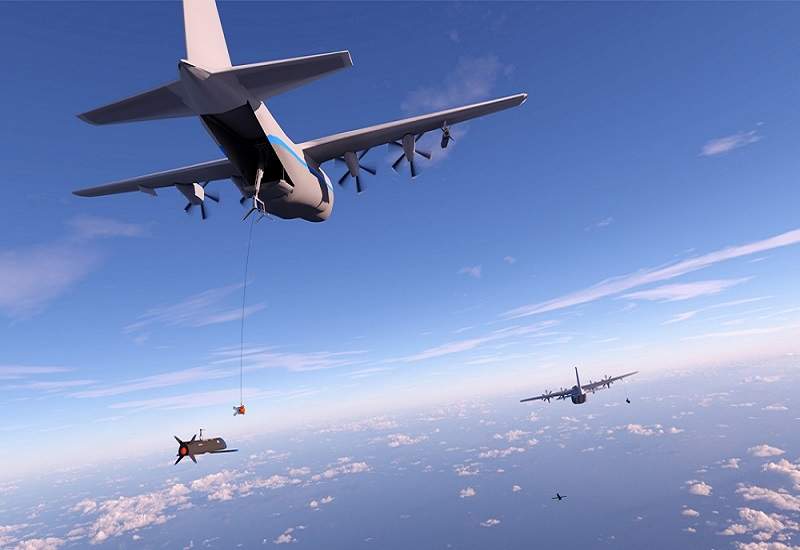
DARPA is one step closer to demonstrating the airborne launch and recovery of multiple unmanned aerial systems (UASs) as it enters the final phase of its Gremlin programme.
The programme’s goal is to develop technology that can recover multiple low-cost, reusable UASs, known as gremlins, from the air.
A recent flight test at Yuma Proving Ground showed a successful, safe separation and captive flight tests of the hard dock and recovery system.
“Early flight tests have given us confidence we can meet our objective to recover four gremlins in 30 minutes,” said DARPA Tactical Technology Office programme manager Scott Wierzbanowski.
The life expectancy of gremlins, estimated to be around 20 uses, could offer significant savings by reducing payload and airframe costs. It could also lower mission and maintenance costs in comparison to conventional platforms, which are designed to operate for decades.
Once the UASs have completed their mission, they will be retrieved by a C-130 transport aircraft so that ground crews can prepare them for redeployment within 24 hours. While the C-130 is being used during the demonstrations for the Gremlins program, Wierzbanowski says the services could easily modify the system for another transport aircraft or other major weapons system.
“We are exploring opportunities with several transition partners and are not committed to a single organisation. Interest is strong with both the roll-on/roll-off capability of the Gremlins system—as it does not require any permanent aircraft modification—and a wing-mounted system to provide greater flexibility to a wider range of aircraft,” said Wierzbanowski.
This adaptability also applies to the gremlins themselves, which can incorporate different types of technology depending on the mission, such as several types of sensors up to a weight of 150 pounds.
DARPA recently awarded a contract to a Dynetics-led team to perform the Phase 3 demonstration. The DARPA programme team is currently exploring the possibility of working with additional integration partners to demonstrate different sensor packages prior to programme completion in 2019.



